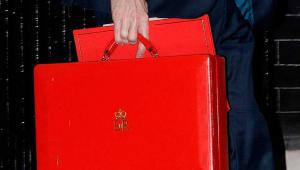Publishing its analysis of the Conservatives, Labour, Liberal Democrat and the Scottish National Party manifestos, the think-tank said there were genuinely big differences between the main parties’ fiscal plans, but the details were not clear from the manifestos.
The analysis concluded the Conservatives were planning the largest reduction in borrowing over the next parliament, 5.2% of national income, to eliminate the deficit by 2018/19.
Although these plans would require some large spending cuts or tax increases, the detailed tax plans, including increases in the tax-free personal allowance, amounted to a net giveaway. Only £2bn of the planned £12bn saving from welfare spending had been set out by the party, while unprotected areas of public spending face a cut of 17.9% between 2014/15 and 2018/19, on top of the 18% undertaken in the current parliament.
The Post-election Austerity: parties’ plans compared report highlighted that Labour had been considerably more vague about how much they would want to borrow. The proposal to get a surplus on the current budget by the end of the next parliament did not state when this would be met or how much this surplus should be. Such a pledge could be met by freezing departmental spending in real terms through the parliament, although deeper cuts would likely be needed if spending on NHS, education and international development was protected. A reduction of 1.8% in unprotected departments was forecast.
According to the IFS, the LibDems have been more transparent about their overall fiscal plans through to 2017/18 – when they aim to have balanced the current budget – and are aiming for a tightening that amounts to 3.9% of national income. This would require a 9% real terms reduction.
The analysis also found that the SNP’s proposals imply the same reduction in borrowing over the next parliament as Labour, although the reduction in borrowing under their plans would be slower, with only their plans requiring further cuts in 2019/20. However, the party’s manifesto plans did not match the rhetoric to end austerity, the report stated.
Publishing the report, IFS deputy director Carl Emmerson said the electorate has a real choice in this election, although only a ‘broad outline’ of the impact can be seen from the manifestos.
‘Conservative plans involve a significantly larger reduction in borrowing and debt than Labour plans. But they are predicated on substantial and almost entirely unspecified spending cuts and tax increases. While Labour has been considerably less clear about its overall fiscal ambitions its stated position appears to be consistent with little in the way of further spending cuts after this year.’
Rowena Crawford, senior research economist added that Labour's proposed measures, which include tax rises including a new levy on homes worth more than £2m, might be broadly enough to meet their target for only borrowing to invest. However, this would leave borrowing at £26bn a year in today's terms.
‘If Labour wanted to reduce borrowing to a lower level than this, they would have to spell out more detail of how they would get there,’ she added.
Responding to the IFS analysis, the TaxPayers' Alliance said parties owed it to taxpayers to come clean about what spending the country can, and cannot, afford.
However, chief executive Jonathan Isaby said this candour had so far been absent from the campaign.
‘Politicians are talking the talk on deficit reduction but there remains precious little indication they're willing to walk the walk,’ he added.
Responding to the figures, Labour’s Ed Balls said they showed the Conservatives proposed the most extreme cuts.
‘The truth the Tories won’t admit is their plans are so extreme they would end up cutting the NHS. Countries which have cut spending on this scale have cut their health service by an average of one per cent of GDP – the equivalent of £7bn.’
For the LibDems, David Laws said the IFS showed had showed the party was the most transparent about its plans and would end austerity the earliest.
‘By contrast, the IFS lift the lid on Tory plans to cut public spending to the bone and accuse them of burying details of their the plans to shrink the state.
‘They also shine a light on the sheer scale of Labour’s deficit denial, which includes yet unspecified levels of borrowing, despite starving the NHS of the cash it needs.’




















